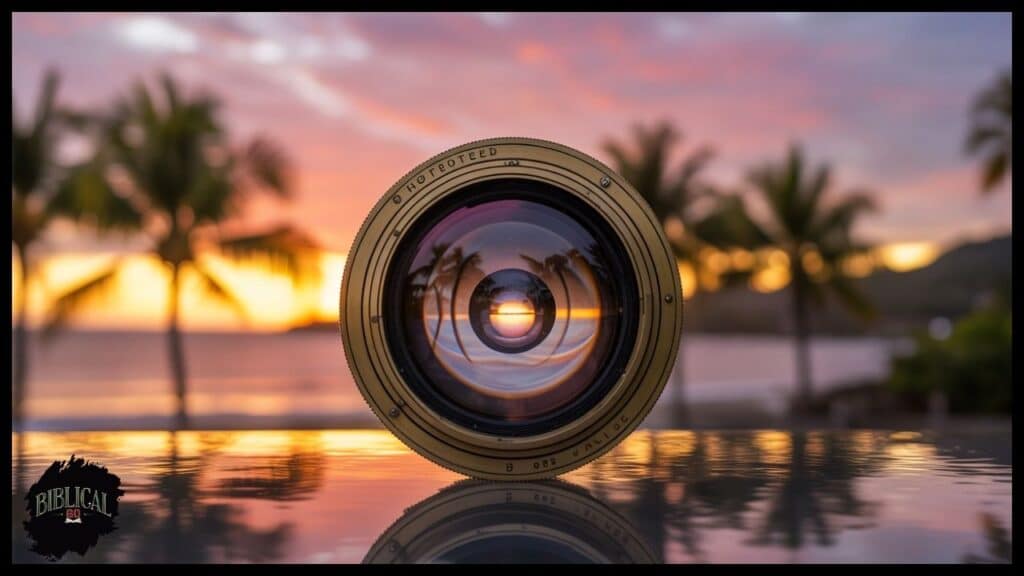Lens flares are a fascinating and often controversial phenomenon in the world of photography. They are caused by the reflection of light within a camera’s lens, creating bright spots or light streaks in the image. These flares, although sometimes considered a flaw, can add artistic flair, making images feel more dynamic and alive. One tool that has gained significant attention in the photography community is the Photeeq Lens Flare, which offers a unique way to incorporate this effect into digital photography. In this article, we’ll explore what Photeeq Lens Flare is, its uses, and how it can elevate your photography game.
What Is Photeeq Lens Flare?
Understanding Lens Flare in Photography
Before delving into the specifics of Photeeq lens flare, it’s essential to understand what lens flare is and how it forms. Lens flare occurs when light, often from a bright source like the sun or artificial lights, enters the camera lens at an angle and reflects off the internal elements of the lens. This light scatter creates distinctive spots, streaks, or a hazy glow that can appear in your photos.
While traditional photographers may try to avoid lens flare by adjusting their angles or using lens hoods, some photographers embrace it as an intentional part of the creative process. This is where tools like Photeeq Lens Flare come in handy.
Photeeq Lens Flare: The Tool
Photeeq Lens Flare is a plugin or software tool designed for use in post-production. It allows photographers to add lens flare effects to their images digitally, giving them complete control over the intensity, color, and placement of the flare. Whether you’re looking to create a subtle hint of sunlight or an intense, dramatic burst of light, Photeeq Lens Flare offers a variety of customizable options.
Why Use Photeeq Lens Flare in Photography?
Adding a Cinematic Touch
One of the most significant reasons to incorporate lens flare into your images is the cinematic effect it can provide. Lens flares are a common feature in many films, often used to enhance dramatic moments. The same can be applied to still photography with Photeeq Lens Flare. By adding flare effects to your photos, you can evoke a sense of drama, emotion, and movement, making your images feel more like scenes from a movie.
The warmth and vibrancy that lens flare can inject into an image makes it a valuable tool in both portrait and landscape photography. Whether you’re photographing a subject in front of a sunset or capturing a cityscape with the sun dipping below the horizon, Photeeq Lens Flare adds an extra layer of depth and mood to the shot.
Emphasizing Light and Texture
Light plays a vital role in photography, not just in how it illuminates a subject, but also in how it interacts with textures and surfaces. By adding Photeeq Lens Flare to an image, you can enhance the texture of the light. This helps bring out the subtleties in the way light interacts with surfaces such as glass, water, or even the skin in a portrait.
The subtle textures created by lens flare can emphasize natural patterns or enhance a particular feature in your photo. For example, a Photeeq Lens Flare can help highlight the softness of a portrait subject’s hair or bring out the reflection of light in a wet street after rain, resulting in more visually captivating images.
Artistic Freedom and Customization
One of the most significant advantages of Photeeq Lens Flare is the level of customization it offers. Unlike natural lens flare, which can sometimes be uncontrollable and unpredictable, Photeeq Lens Flare gives you full artistic freedom. You can choose the type of flare—whether it’s a classic circular spot, a streak, or a complex geometric pattern—and adjust its intensity, size, and color to fit your vision. This flexibility allows photographers to use lens flare as a deliberate and precise artistic tool.
Enhancing Mood and Atmosphere
The right flare can completely transform the mood of a photograph. A soft, warm lens flare can evoke feelings of nostalgia and warmth, while a more intense flare might convey a sense of power or awe. Photeeq Lens Flare is perfect for creating these atmospheres, as it allows you to carefully control the way light is introduced into your images. Whether you are shooting a romantic portrait or a dramatic landscape, you can use lens flare to accentuate the emotional undercurrent of the scene.
How to Use Photeeq Lens Flare: A Step-by-Step Guide
1. Choose the Right Image
Not all photos are suitable for lens flare. The most effective images for Photeeq Lens Flare are those with strong light sources, such as sunsets, street lights, or bright reflections. These images will give the flare a natural look and ensure that it complements the existing light in the scene.
2. Add the Lens Flare in Post-Production
Once you’ve selected your image, import it into your editing software and apply the Photeeq Lens Flare plugin. You’ll typically find the flare effect under the ‘filters’ or ‘effects’ section. Depending on the software, you may be able to drag the flare effect directly onto your image.
3. Adjust the Intensity and Placement
After adding the flare, you can begin fine-tuning the intensity, size, and position of the flare. If you want a subtle effect, decrease the intensity; if you want a more dramatic look, increase it. Position the flare so that it enhances the natural light direction in your image.
4. Customize the Color and Shape
Photeeq Lens Flare offers a variety of customizable options, including the ability to adjust the flare’s color and shape. You can choose warm hues for a sunset-like effect, or cooler tones for a more ethereal, cool look. The shape of the flare is also customizable, with options for streaks, circles, or abstract patterns, depending on the style you want to achieve.
5. Blend the Flare into the Image
Ensure that the lens flare blends seamlessly with the rest of your image. Sometimes, Photeeq Lens Flare might appear too strong or artificial if not adjusted properly. Use blending modes and opacity settings to make the flare appear more natural.
6. Final Touches
After adding the flare, assess how it impacts the overall image. Adjust other settings like contrast, brightness, or saturation to ensure the flare complements the scene rather than detracting from it. The final goal is to make the flare look like a natural part of the scene, enhancing rather than overpowering the subject.
Photeeq Lens Flare in Different Photography Styles
Landscape Photography
In landscape photography, Photeeq Lens Flare can be used to create a dramatic focal point. When shooting vast outdoor scenes, lens flares can help emphasize the grandeur of the landscape, especially when the sun is positioned in the frame. Whether it’s a glowing sunset over mountains or the rays of light piercing through a forest canopy, adding a Photeeq Lens Flare can bring a sense of realism and beauty to the scene.
Portrait Photography
When it comes to portrait photography, lens flares can introduce a magical and ethereal quality to the image. A subtle Photeeq Lens Flare placed in the background can create a halo effect around your subject, making them appear more radiant and otherworldly. This effect is especially popular in fashion, editorial, and wedding photography.
Product Photography
Photeeq Lens Flare can also be used in product photography to highlight certain aspects of the product. For instance, a lens flare reflecting off a shiny surface like a watch or piece of jewelry can create an interesting focal point, drawing attention to the item while adding a touch of glamor to the image.
Architecture Photography
In architectural photography, lens flares can create dramatic effects by reflecting light off buildings or windows. A Photeeq Lens Flare might make a modern skyscraper look even more futuristic or add warmth to an older, historical structure.
Common Mistakes to Avoid with Photeeq Lens Flare
While lens flare can be a powerful tool, it’s important to use it judiciously. Too much flare can detract from the subject and even make the image look unnatural. Here are a few common mistakes to avoid:
- Overuse of Flare: Excessive lens flare can make the image feel too chaotic. Use flare sparingly to enhance the image, not overpower it.
- Ignoring the Natural Light Source: The flare should follow the natural direction of light in the image. Misplaced flare can make the image look unrealistic.
- Not Adjusting Opacity: If the flare is too intense, it can dominate the image. Adjusting the opacity and blending modes helps to integrate the flare seamlessly into the image.
Conclusion: Elevating Your Photography with Photeeq Lens Flare
Incorporating lens flare into your photography is an excellent way to introduce a creative and cinematic element into your work. Photeeq Lens Flare allows you to control this effect in a way that enhances the mood, atmosphere, and composition of your images. Whether you’re aiming for a subtle glow or a dramatic burst of light, this tool provides the flexibility and power to make your photos stand out.
By experimenting with Photeeq Lens Flare, you can add a professional touch to your photography, evoking emotions, enhancing textures, and creating a unique visual style that speaks to your creative vision.


